Drilling Tools (4) Item Number: E2237-0 from the National Museum of Natural History

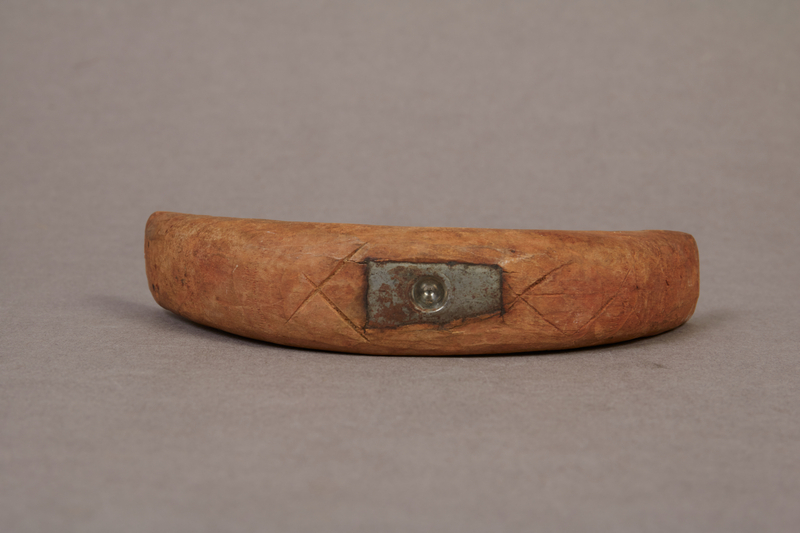
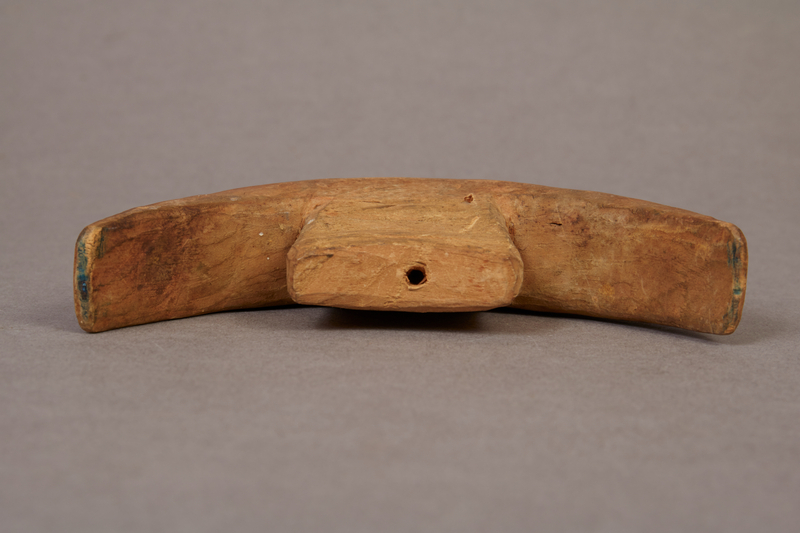
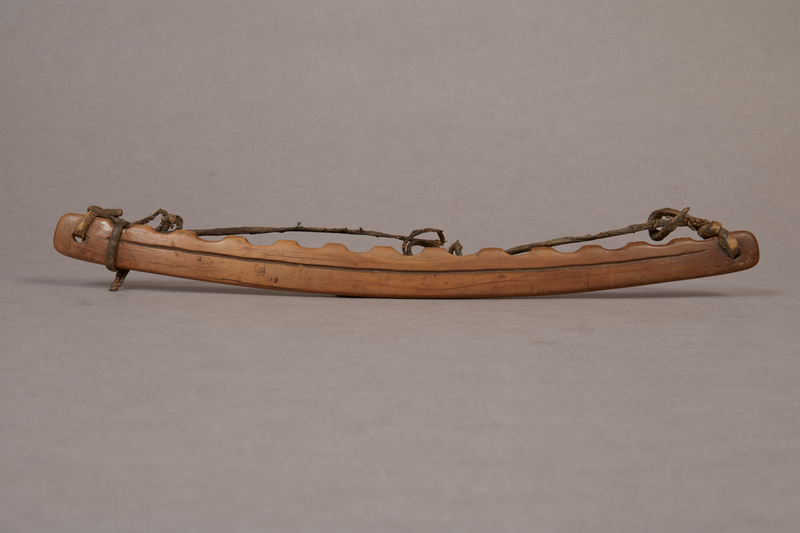

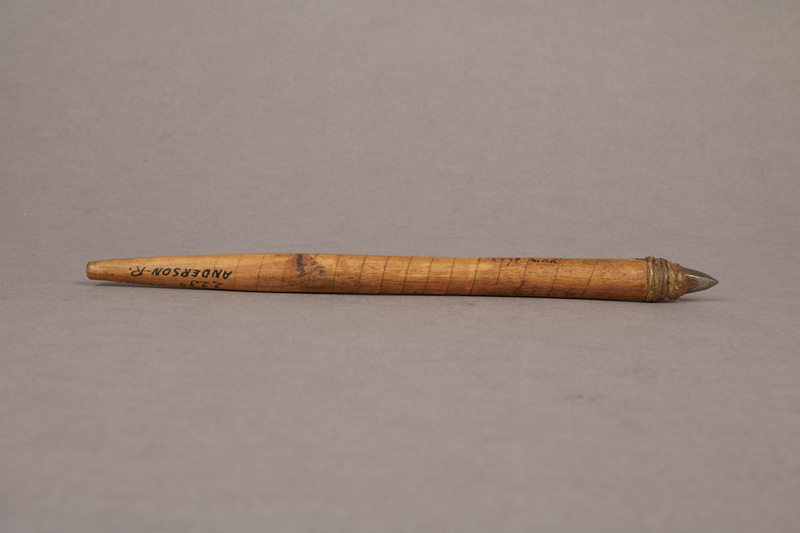
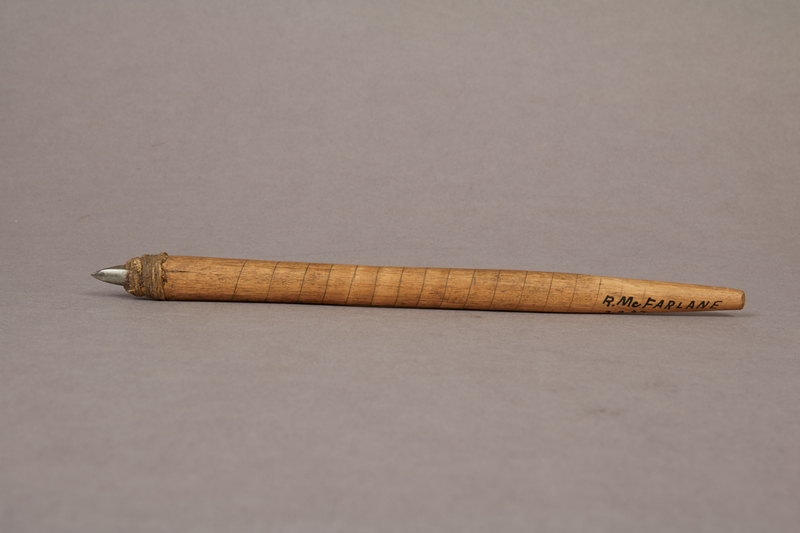
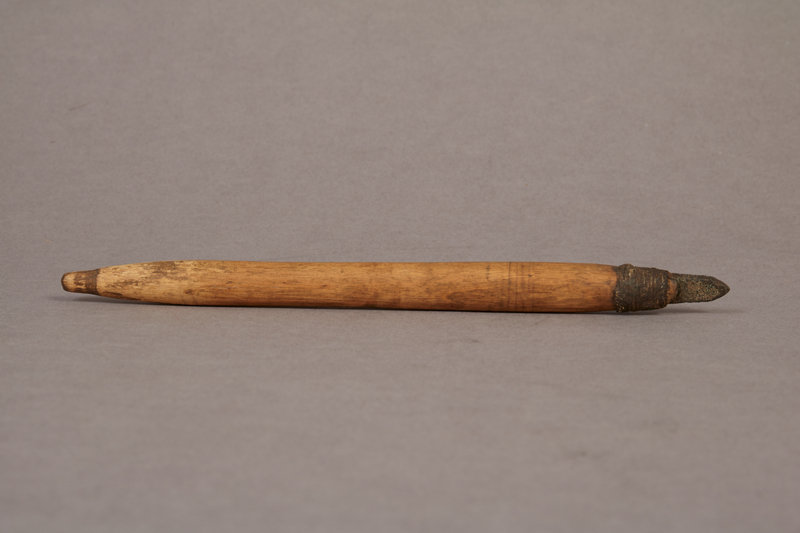
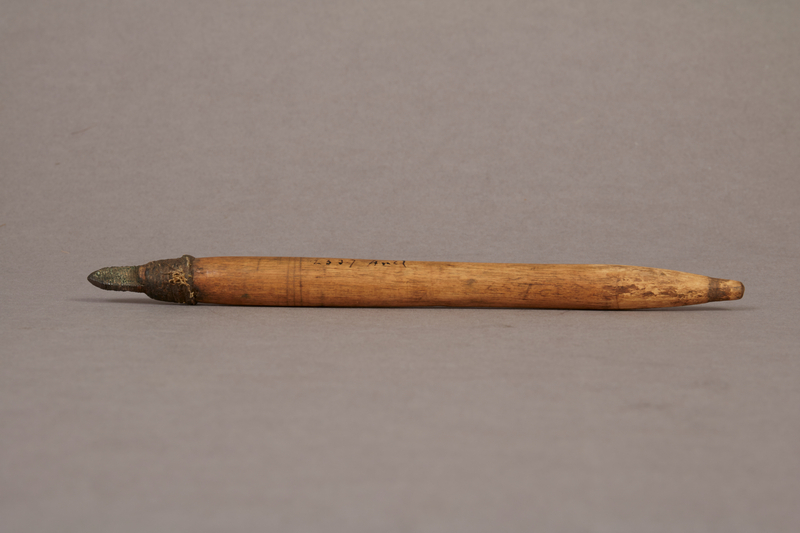

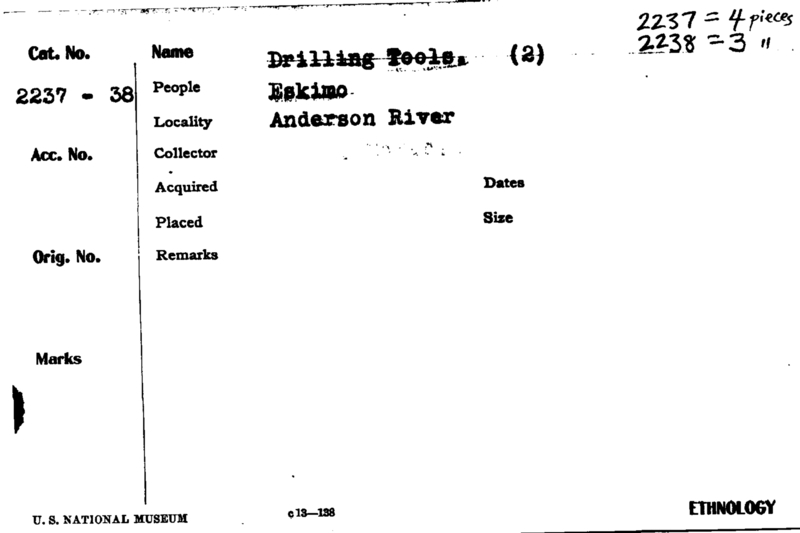
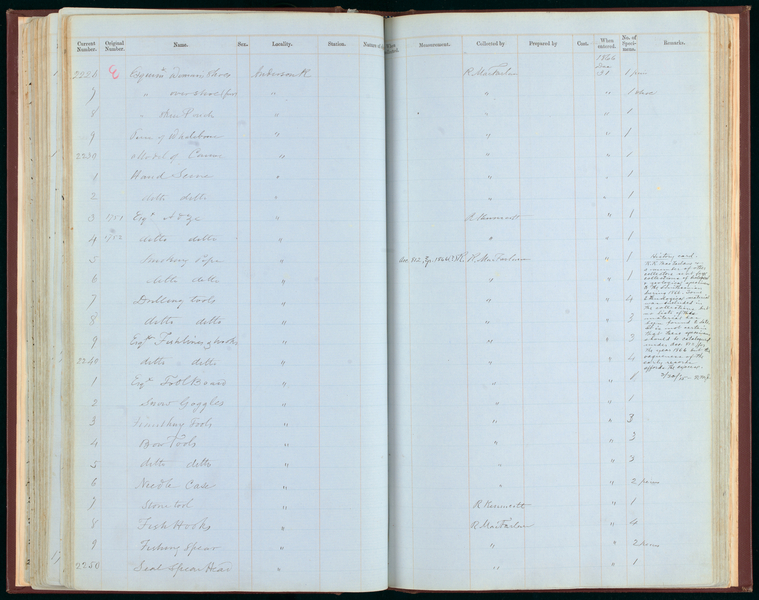
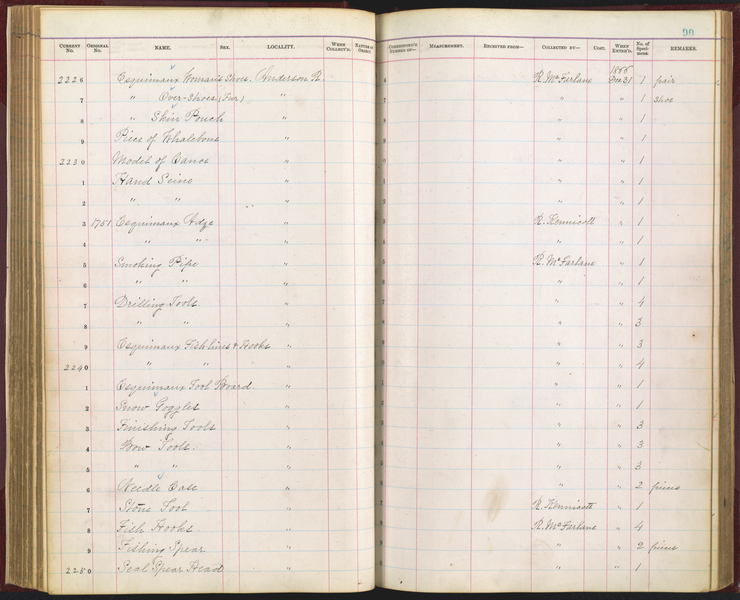
Notes
Source of the information below: Inuvialuit Pitqusiit Inuuniarutait: Inuvialuit Living History, The MacFarlane Collection website, by the Inuvialuit Cultural Resource Centre (ICRC), Inuvik, N.W.T., Canada (website credits here http://www.inuvialuitlivinghistory.ca/posts/12 ), entry on this artifact http://www.inuvialuitlivinghistory.ca/items/186 , retrieved 1-3-2020: Bow drill set consisting of a bow, mouthpiece, and two spindles. The slightly curved bow has been made from ivory, and has a series of notches along the concave edge to provide a grip. It has been decorated with two shallow notches cut into each of the resulting projections, and by an engraved line cut into each side. A hide thong is attached to the bow by means of holes that have been drilled at either end. The flanged mouthpiece is made from wood, and has an inset iron bearing with a depression for holding against the end of the spindle shafts. The curved surface of the mouthpiece adjacent to the bearing has been decorated with 'X' shaped incisions, and it has been stained with red ochre. Both spindle shafts have bits made from reworked iron files inserted at one end and held in place with sinew lashings. Each of the spindles has been decorated with incised lines. More information here: http://www.inuvialuitlivinghistory.ca/item_types/20: The bow drills in the MacFarlane Collection were used for boring holes into wood, antler, bone and ivory. The drill spindle (shaft) has a bit at one end, and the other end is shaped to fit into a bearing that is held between the teeth. The spindle is rotated by wrapping a slack thong attached at each end of a drill bow around it, and moving the bow back and forth. Ancestral Inuvialuit also used another type of bow drill for starting fires.
Item History
- Made in Northwest Territories, Canada
- Collected in Northwest Territories, Canada
- Received from Roderick R. MacFarlane on December 21, 1866
Who
- Culture
- Eskimo, Inuit and Inuvialuk
- Received from
- Roderick R. MacFarlane
Where
- Holding Institution
- National Museum of Natural History
- Made in
- Northwest Territories, Canada
- Collected in
- Northwest Territories, Canada
When
- Acquisition Date
- on December 21, 1866
Other
- Accession Number
- 66A00090